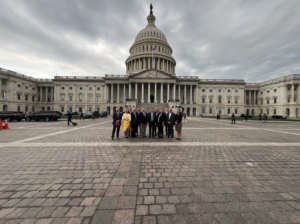UP played key role in FRA’s Changing At-Risk Behavior pilot program
Written by jroodUnion Pacific's San Antonio Service Unit played a key role in the Federal Railroad Administration's Changing At-Risk Behavior pilot project that will be honored by the American Evaluation Association Nov. 4 in Anaheim, Calif. CAB is a safety intervention pilot project that incorporates peer-to-peer observation and feedback, safety leadership development and continuous process improvement. The CAB evaluation team from the Volpe National Transportation Systems Center and the Federal Railroad Administration will be recognized with an Outstanding Evaluation Award for evaluating this comprehensive new initiative, which resulted in safety improvements for Union Pacific and influenced broader safety culture shift in the railroad industry. "Safety is our top priority and we were proud to participate in and support this important railroad industry initiative," said Lance Fritz, Union Pacific executive vice president, operations. "Collaboration among our own employees, that is, local management, union leadership and our craft employees, the FRA and the U.S. Department of Transportation was critical to the project's success. The results of the evaluation are making a remarkable difference in the railroad industry." Union Pacific debuted new safety initiatives across its San Antonio Service Unit, which spans 800 miles and includes more than 1,000 locomotive engineers and conductors. CAB evaluation results showed an 85 percent reduction in at-risk behaviors, a 72 percent drop in locomotive engineer decertification rates and a 69 percent drop in the rate of human factor-caused derailments as a result of the CAB project. Similar projects have since been initiated by passenger and freight railroads across North America. The AEA award is presented for successfully completing a single evaluation project capable of standing alone as an example of high-quality evaluation. AEA is a preeminent professional association for evaluators, comprising more than 7,000 members from every state and more than 60 foreign countries.





